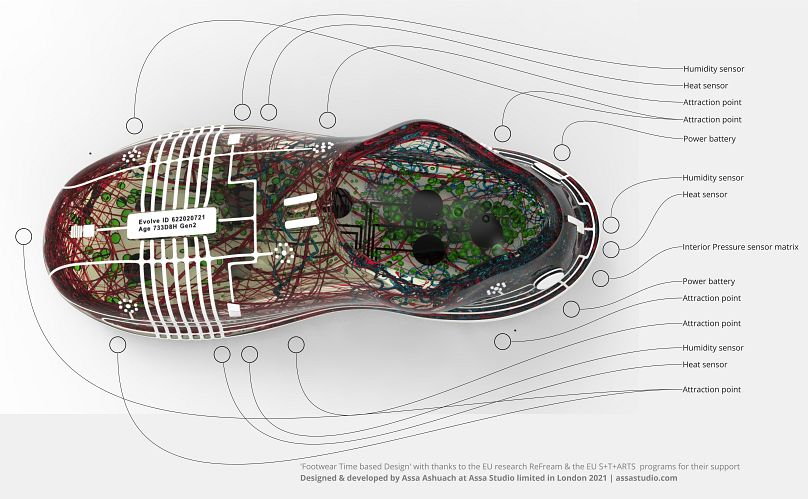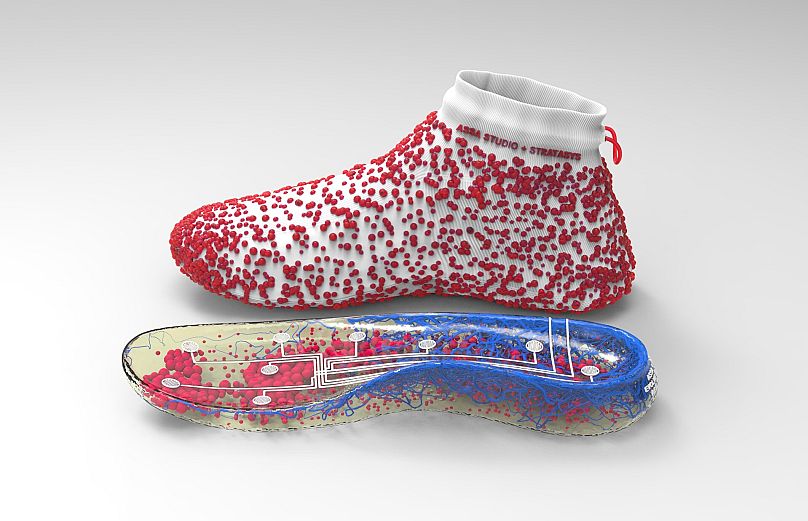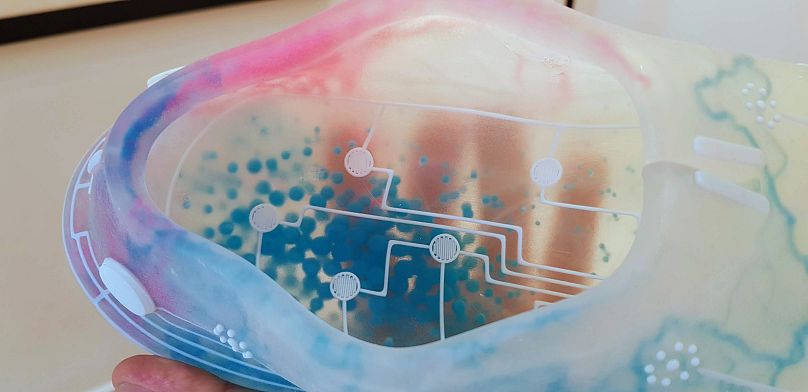Tired of wearing the same uncomfortable ill-fitting shoes? Stay tuned because in the next few years these 3D-printed shoes, which adapt to your feet based on data, could be coming to the market.
Assa Ashuach, the creator of a futuristic pair of 3D-printed shoes says they are capable of studying you over time and improving themselves.
The Evolve AI shoes, which are currently on display at the Dubai Museum of Future, are pushing the boundaries of science and design. The team behind these snazzy shoes is hoping to get them off the museum shelf and into users' hands within the next three years.
“We are all a bit different, some of us have small feet, others have big feet. The same goes for legs, which can be thin, long, or large. This is something completely different, these shoes are made for you,” said Ashuach, who has been working at the forefront of 3D printing and design since the early 2000s.
The global footwear industry is a highly lucrative one, worth an estimated €360 billion in 2022, according to a survey by market research organisation Straits Research.
But many of the shoes on the market remain mass-produced and come in standard sizes. This means there is an abundance of cheap and trendy shoes out there that are not necessarily adapted to different body types.
How do the shoes work?
The Evolve AI shoes are fitted with a 3D-printed circuit board, which contains data-collecting sensors. This EU-funded project is a collaboration between multiple companies, including Assa Ashuach's studio, Stratasys, Haratech, and Profactor.
“The shoes assess whether you are pressing inwards or outwards, if you are gaining or losing weight, how much you sweat. The shoe supports your foot and moulds itself around it,” says Ashuach.
Users will eventually wear what Ashuach coins the "first generation of shoes," which collect data to be sent to a "second generation" of shoes, stocked in a virtual cloud. Once enough data has been collected, the shoes can be 3D-printed.
"You would have to wait around a year before printing them, or longer if you want them to be even more adapted," said Ashuach, who hopes to create one range at around €235 and another more premium range priced at €500.
3D printing is becoming increasingly commonplace in a variety of industries, ranging from the medical world to the automobile sector. This booming global market was worth an estimated €18.8 billion in 2023, with forecasts suggesting this could grow by 23.5 per cent by 2030, according to a survey by Grand View Research.
Who are the shoes for?
To wear the shoes, users must not only pay a high price but also give away their personal data.
The shoes track how users move but also collect data on their external environment by monitoring the weather for instance.
"You could end up with a shoe which has adapted its ventilation to you, depending on whether you spend more time in hot or cold environments. The kind of terrain you are on can also be assessed to modify the shoe's weight," said Ashuach.
They may also have health benefits, the designer claims.
"We can dramatically improve the lives of diabetics by adapting the shoes to them, as they can suffer from pressure wounds on their feet," Ashuach added.
An out-there design
The Evolve AI shoes certainly look different compared to your conventional pair of Nike AirForce trainers and for some, they may even be hard on the eyes.
This is all part of the aesthetic that Ashuach is looking to achieve.
“I was inspired by the human skin for the design, you can see the shoe has veins for instance," he explains.
The innovative design also plays a part in the next big goal for the designers: to incorporate regenerative materials that can improve and fix themselves.
"The idea is that these veins would actually be able grow around your foot while you are wearing the shoes to support you," Ashuach said with a glimmer of excitement in his eyes.














